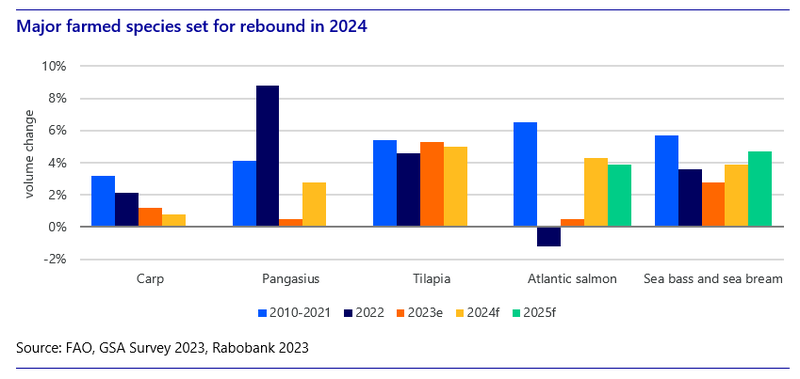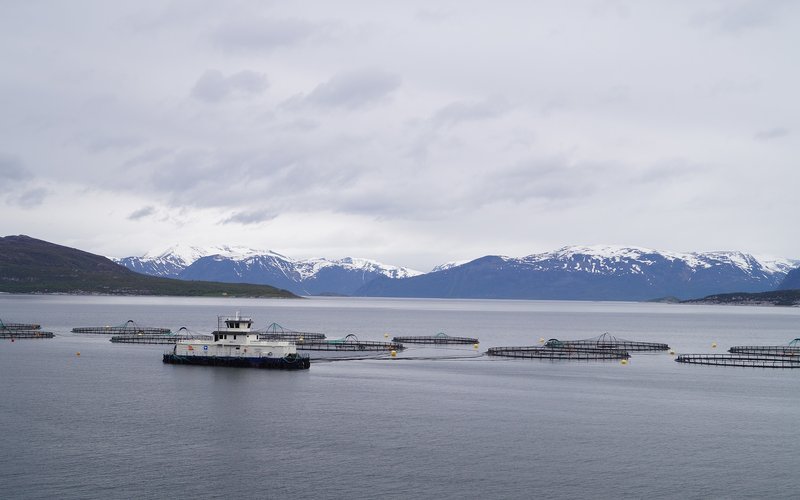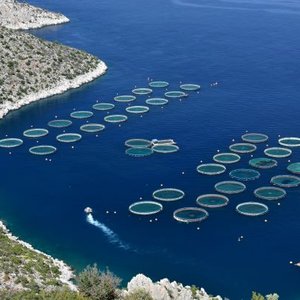According to a recent Rabobank report, industry responses from the annual seafood production survey, conducted in partnership with the Global Seafood Alliance, suggest a more optimistic production outlook for 2024 compared to 2023.
Shrimp: Back to growth in 2024
Global shrimp production is forecast to recover in 2024, albeit at a lower rate than the ten-year historical average. The survey results forecast year-on-year shrimp production growth of 4.8% in 2024, surpassing 2022’s peak volumes, after an expected modest decline of 0.4% in 2023.
In Ecuador, production growth is expected to decelerate in 2024. “While continued growth is anticipated, milder expectations may be a result of El Niño-related uncertainty, as potentially strong El Niño conditions pose downside risks due to heavy rains, which can increase flooding risks and potentially damage the infrastructure of ponds in Ecuador,” explained Novel Sharma, analyst – Seafood at Rabobank.
There is optimism for Asian shrimp production, with survey respondents forecasting a potential recovery of 4% in 2024, following the region’s first decline in a decade in 2023. “This will depend on prices improving in 2024 after the continuous downward trend in 2023, which made the majority of the industry unprofitable,” noted Sharma.
Likewise, production in India and Vietnam is set to recover in 2024, following sharp contractions in 2023. Whether both regions achieve their forecast production growth in 2024 will depend on demand improvement in the US and Europe and prices recovering sufficiently to incentivize farmers to increase stocking of ponds.
Finfish: Major farmed species set to rebound in 2024
Similarly, optimism abounds for major farmed species, with salmon, tilapia, pangasius, seabream, and seabass all expected to grow, though El Niño poses potential downside risks for some species and regions.
After two consecutive years of weak global production growth, Atlantic salmon production reached an inflection point in Q3 2023. Provided there are no unforeseen biological issues or events, global production is expected to grow by 4.3% and 3.9%, respectively, in 2024 and 2025, led by Norway.
However, uncertainties remain around Chile’s potential volume growth over the next few years due to new legislation and biological issues. It is unlikely that production volumes will eclipse 2020 levels before 2025. Additionally, there are potential downside risks heading into 2024, as higher temperatures due to El Niño conditions may lead to higher incidences of algal blooms, causing an increase in mortalities. However, the industry is better equipped to deal with potential downsides now than it was during the last El Niño event.
After a pause in 2020, global tilapia production began gradually recovering and is expected to grow by 5.3% YOY in 2023 – eclipsing 2019 volumes. Strong growth is anticipated in Asia, particularly in Indonesia, though China is expected to maintain its position as the top tilapia producer in the near term. However, if consumers continue to favor premium species, farmers could change the species they produce, potentially decelerating tilapia production growth.

Market prices are the industry’s top concern
The survey also asked industry experts about their concerns for the coming year. Market prices topped the list, as uncertainties remain about the effects of persistent inflation and the recovery of seafood demand. Elevated costs and stagnating household disposable incomes remain challenges for consumers across major markets. Consumers may look to trade down, either within the seafood category or to lower-priced protein options.










